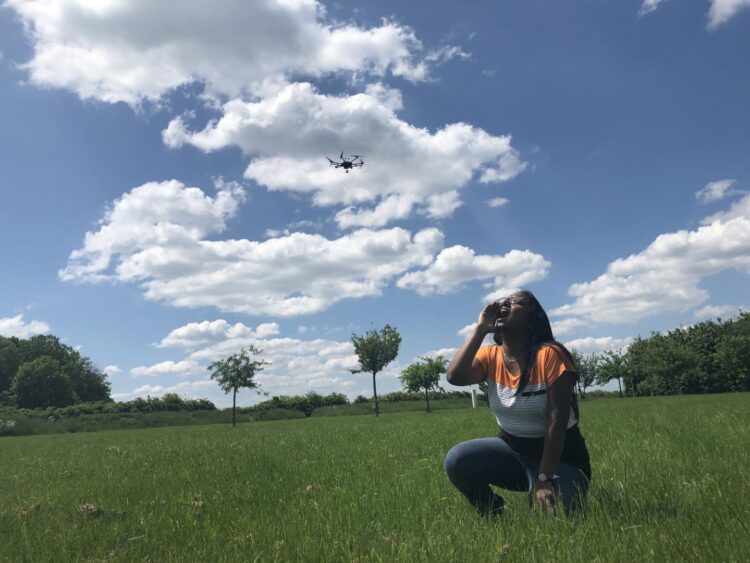UAVs are unencumbered by terrain issues, can get above rescue scenes
MELVILLE, N.Y., June 8, 2021 — In a disaster, time is of the essence when searching for potential victims who may be difficult to find. Unmanned aerial vehicles make the perfect platform for state-of-the-art technology allowing emergency crews to find those in need and provide situational awareness over a large area.
During the 180th Meeting of the Acoustical Society of America, which will be held virtually June 8-10, Macarena Varela, from Fraunhofer FKIE, will describe how a system using an array of microphones and advanced processing techniques could be a lifesaver for disaster victims. The session, “Bearing Estimation of Screams Using a Volumetric Microphone Array Mounted on a UAV,” will take place Tuesday, June 8, at 10:35 a.m. Eastern U.S.
During a disaster, every minute counts in finding missing and injured people. UAVs can cover a larger area than rescuers on the ground, so mounting small microphones on the drones can let emergency crews potentially hear screaming from someone in need of saving.
“Our project is an ongoing project, so we are still doing a lot of testing. We have already successfully detected and angularly located impulsive sounds very precisely near distances with the presence of drone noise,” Varela said. “We will be testing the system on a flying drone to measure impulsive sounds, such as screams, and process the data with different methods to also estimate the geographical positions of the sounds.”
The array of microphones, called Crow’s Nest Array, is combined with advanced array processing techniques, such as beamforming. The number and distributions of microphones placed on the drones have a crucial influence on the listening capabilities. Varela said environmental noises can also play a part in the effectiveness of the microphones.
“We have a lot of experience in filtering noise, such as wind noise, extremely loud helicopter noise, ground vehicles noise, and more,” Varela said. “We use different types of filters to be able to reduce noise, and we use diverse detection procedures to extract the signals of interest, such as impulsive sounds or screams.”
Varela envisions the listening drones saving lives by hearing sounds of survivors that may be buried under rubble from an earthquake or in a collapsed building.
###
MORE MEETING INFORMATION
USEFUL LINKS
Main meeting website: https:/
Technical program: https:/
Press Room: http://acoustics.
WORLDWIDE PRESS ROOM
In the coming weeks, ASA’s Worldwide Press Room will be updated with additional tips on dozens of newsworthy stories and lay language papers, which are summaries of presentations written by scientists for a general audience and accompanied by photos, audio and video. You can visit the site during the meeting at http://acoustics.
PRESS REGISTRATION FOR MEETING SESSIONS
We will grant free registration for credentialed and professional freelance journalists who wish to attend the meeting sessions. If you are a reporter and would like to attend, contact the AIP Media Line at [email protected]. We can also help with setting up interviews and obtaining images, sound clips or background information.
VIRTUAL MEDIA BRIEFINGS
ABOUT THE ACOUSTICAL SOCIETY OF AMERICA
The Acoustical Society of America (ASA) is the premier international scientific society in acoustics devoted to the science and technology of sound. Its 7,000 members worldwide represent a broad spectrum of the study of acoustics. ASA publications include The Journal of the Acoustical Society of America (the world’s leading journal on acoustics), Acoustics Today magazine, books, and standards on acoustics. The society also holds two major scientific meetings each year. For more information about ASA, visit our website at http://www.
Media Contact
Larry Frum
[email protected]





